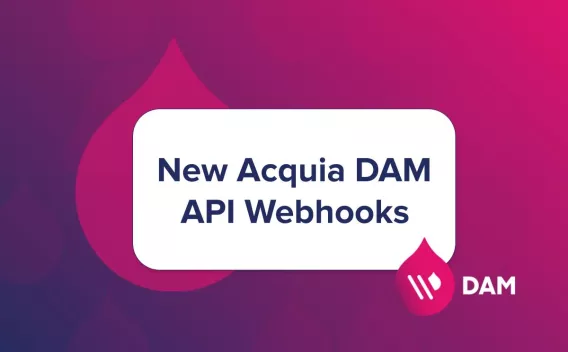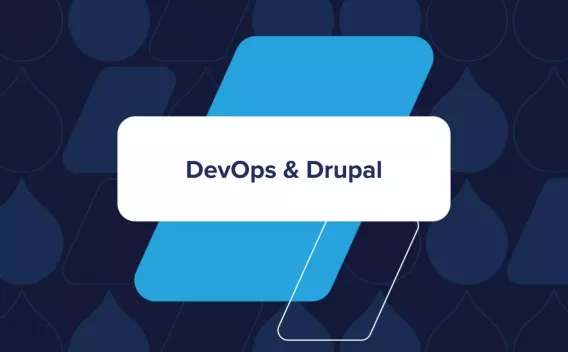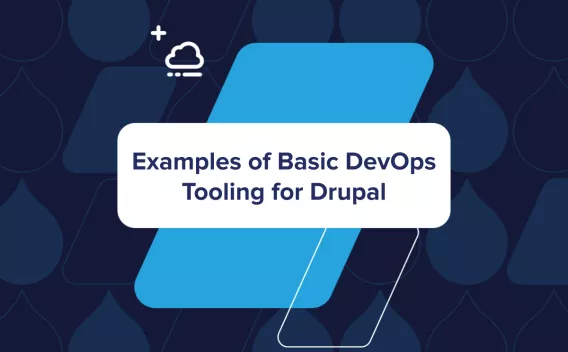This is Part 4 of an interview with Will Eisner, Senior Director, Product at Acquia. Will’s primary focus is on Acquia Cloud Site Factory, which helps organizations create and manage many sites, from a dozen to thousands.
In Part 1 and Part 2, Will discussed how companies often discover, to their dismay, that they are running their hundreds of Web sites on many different hard-to-manage platforms; and how Site Factory addresses that problem with a managed delivery that uses a common platform with standard components, provisioning, and lifecycle management. In Part 3 Will covered how managing many sites is becoming the norm, and how more people now have website responsibilities, and how that leads to the need for new tools like Content Hub.
The part that follows explores the differences between Drupal and Site Factory; what Site Factory offers the "Digital Platform Owner;" and tools it contains for coders and site builders. Will also describes Site Factory features that have value for companies in regulated industries, and how it can reduce "cost of ownership."
All the interviews have been conducted by DC Denison, Senior Editor, Technology, at Acquia.
What is it that Site Factory specifically brings to the table other than Drupal?
Site Factory is built for someone we call the Digital Platform Owner. This is the person who has the job of building a great platform that enables their organization to quickly build great new sites and apps, while maintaining governance and control.
Drupal is the base. Drupal is great for building ambitious digital experiences. There’s so much power in Drupal, in core and in contrib, and it gives you unparalleled flexibility and power.
Site Factory provides all the things you need to roll out your Drupal Platform to your organization at scale using a multisite delivery and management approach. It gives you a place to run your platform. It gives you a centralized view of your sites. It allows you to let people in your organization create and manage their sites, built on your platform. It gives you centralized update and control mechanisms. It gives organizations a standard way to govern, assemble, and deliver multiple sites across brands, regions, and teams.
What Site Factory does is make it so that organizations can deliver and manage lots of websites, and specifically, lots of Drupal sites. It’s about delivery, it’s about the creation and management of Drupal sites, and it’s about maintaining them.
Site Factory also has tools for other people on the digital platform team: developers and site builders.
How are they different?
For developers, we offer tools for dealing with a multisite environment, which has a lot of technical challenges. The ability to do an update that could apply to hundreds or thousands of sites, when each site has a database that needs to be updated -- there’s complexity to that. If you do it on your own, it requires a lot of complicated scripting, with manual retry logic, etc. There are challenges for doing activities as basic as adequately testing new code on a representative set of sites. All of that requires a lot of work from the developer, and vigilance.
Those are functionalities that are built into Site Factory. It’s a core part of what Site Factory does: code deployment and code staging. Developers don’t want to focus on their staging or deploy scripts; they want to be working on their platform, which is the fun part.
How about for site builders -- users who aren’t primarily coders?
For site builders, we have a set of tools. These are people who aren’t going to be coding PHP necessarily, but they can use Drupal to assemble and configure great sites. We give them web-based site creation capability. We give them the ability to have starter sites and clone them, so they can roll out new experiences without having to talk to developers. We give them organizational access control mechanisms for their sites.
For example, let’s say, you have a group of sites for your North American market for Product X. You could say, “Great. DC, you’re a new person on the team, I want you to have Drupal content creation rights on all these sites.” That may not seem like such a big deal, but otherwise someone has to go through and grant access to all these different sites and it’s a hassle, or you have to set up and maintain some other mechanism to do it. With Site Factory, we handle that for you. That’s only possible because of the specialized multisite technology that Site Factory uses.
So, that's it: a product for digital platform owners that includes tools for developers and site builders. And of course it’s all built on Acquia Cloud.
Right. Site Factory runs on top of Acquia Cloud.
Yes. That means that Site Factory includes the benefits that come with Acquia Cloud. A Drupal-optimized service orchestration and management service, 24/7 support, 24/7 ops, etc. All the great things that we say about Acquia Cloud, it all applies to Site Factory because Site Factory is built on Acquia Cloud.
If you’re a highly regulated business, how does Site Factory help you? Are there certain features that make it particularly good for industries that are highly regulated?
Yes, there are. We’ve talked a lot in this series about creative flexibility. And who doesn’t want flexibility? But there are cases where you have legal or other compliance reasons where you really need to be able to control exactly what goes out to the world. For example, if you work in healthcare or finance or any other regulated industry, you have an extra layer of control you need to put in place.
Like Pharmaceuticals.
Pharmaceuticals, healthcare, finance. These are all industries where if you say the wrong thing as part of your public-facing website, you could be liable for very large fines. In these cases, you need control and governance.
And Site Factory can do that?
Yes. Let’s say you have a workflow process and you need to enforce it on every site, and nothing can ever be published until people with a certain role approve it. You can enforce that with your code base and with the configuration of your sites.
Site Factory is great for those kind of cases when you need to know with hundred percent certainty that certain code is running, certain configuration is in place. Site Factory can enforce that.
How big a factor is "cost of ownership?"
I talked in the beginning of this series about how organizations often come to us with a site sprawl situation, right? One of the impacts of that site sprawl is maintainability. But there’s another problem. There’s a ton of redundancy and inefficiency and cost in a site sprawl. That means instead of having one code-base to maintain and govern, you could have a hundred or a thousand, and that means you’re paying that much more for each codebase to do the same thing.
Recently there was a paper published about Site Factory and return-on-investment analysis from Forrester and basically the summary is that there’s a dramatic opportunity to save time and money for your organization by leveraging a centrally-governed platform.
But that will only work if you can do it in a way where you don’t lose the creative people. It’s easy to just lock everything down, but if people don’t want to or can’t do their jobs anymore then you haven’t really served the goals of the business.
If the marketing department says, “This is no fun. This site doesn’t reflect our personality,” then what’s the point?
Right, then you’re hindering your business. At Acquia, we’re all about helping companies deliver great, ambitious digital experiences. That’s what we do all the time, right? And Site Factory gives you the tools to scale that out to your organization.






